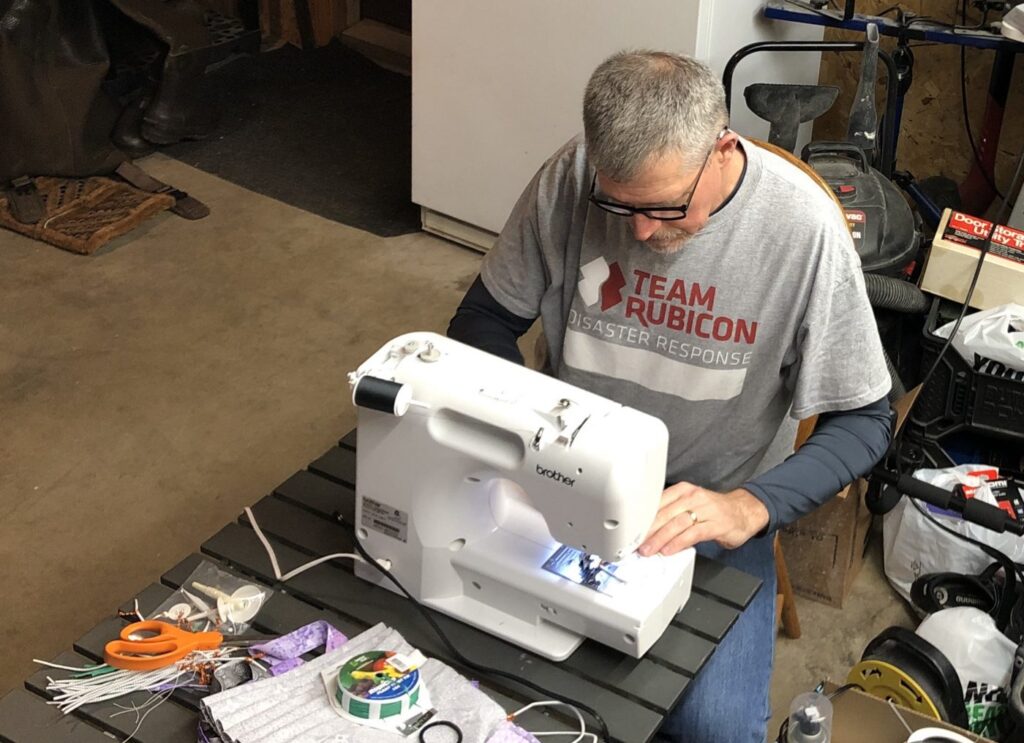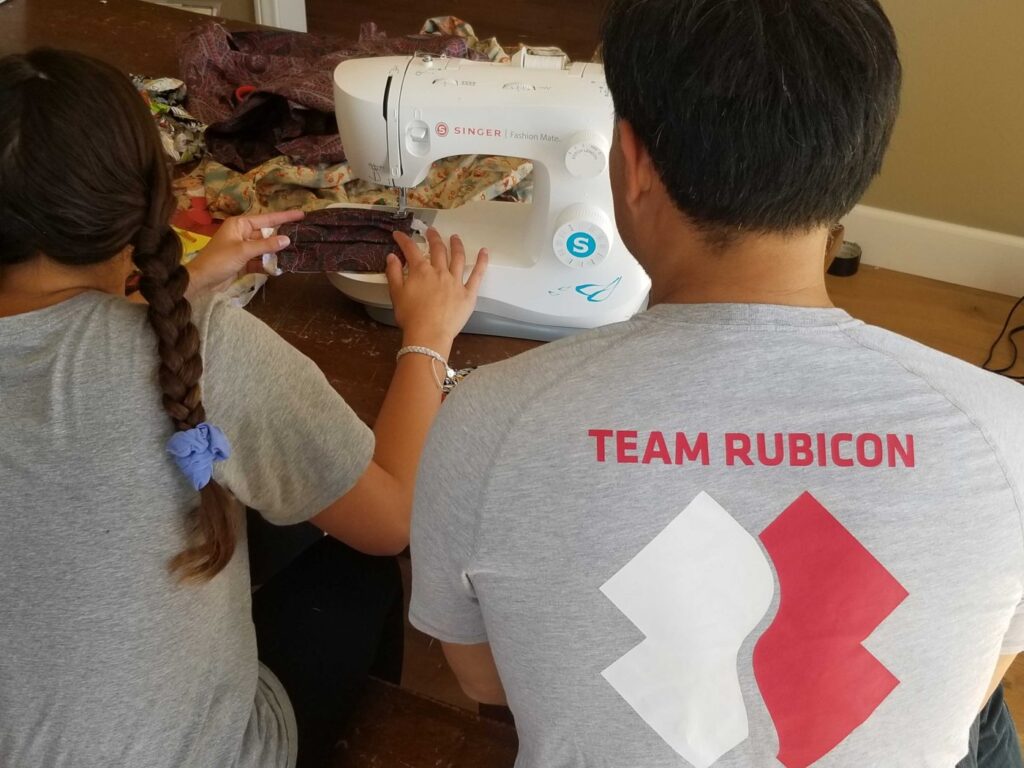Dawn Rankin worked as a paramedic in rural Gates County, North Carolina until an injury forced her to retire two years ago. So, when the coronavirus started spreading across America last month—and especially when she started seeing news reports about a nationwide shortage of medical masks—the Greyshirt felt called to action.
“It felt like I was watching everyone going off to fight without me,” Rankin recalled. “And they were going off the fight without the proper gear, which was completely unacceptable to me.” Although Rankin couldn’t join the fight against COVID-19 in person, there was something she could do, she realized, and so she took her old sewing machine down from its shelf, found a mask pattern on YouTube, and got to work.

Steven Voller gets sewing done.
She hadn’t used the machine in several decades, and it took her a few tries to get the hang of things. “The first couple of masks I made were pretty bad,” she said, laughing. “They looked kind of like impressionist art. But it came back pretty quick—it was like riding a bicycle.”
With her husband cutting the fabric, Rankin can now knock out a mask in about 10 minutes; she’s made about 100 in the past week alone, sending them out to people who request them via a Facebook group she belongs to. For medical workers, Rankin makes a mask that can fit an N95 respirator; when the mask gets dirty, it can be thrown in the washing machine, thus extending the life of the respirator.
Volunteer Mask Makers Get Sewing Done
Rankin is just one of hundreds of Team Rubicon Greyshirts across the country making contingency masks for medical professionals, first-responders, grocery store workers, and everyday citizens. Before the coronavirus pandemic, Steven Voller of Eau Claire, WI had only sewn patches on his Army uniform. But, when he saw the national call for masks, he repaired his old sewing machine and taught himself to cut patterns and sew. Then, he bought a second sewing machine on Amazon so that he and his wife could sew side by side. Working for a few hours in the morning and evening, they’ve produced several dozen masks so far.
“This is a war, and we all have to pull together,” Voller said. “We all have to be chipping in and doing as much as we can. This is my small way of contributing.”

Father and daughter face mask makers.
Even If you can’t make masks, there are still ways to help out. Maria Ballard of Anchorage, AK has been helping coordinate the delivery of masks through several Facebook groups she joined. She spends her days calling local retailers and nonprofit agencies to assess their needs, posts a request for help on Facebook, and then delivers the completed masks. One Costco in Anchorage recently received a shipment of 500 hand-sewn masks thanks to her efforts; when Ballard visited the store recently, many of the employees were wearing the masks she had delivered.
“I’m starting to see masks that our team has made out and about in town,” Ballard said. “It’s very exciting.”
With everyone from community hospitals to the New York Times, the CDC, and Facebook groups like The Masked Sewists for SE Wisconsin publishing patterns for making masks, it’s easier than ever for ordinary people to contribute to the fight against COVID-19.
“If I can do it, anyone can,” said Voller. “I went from having absolutely zero skills at sewing to having people reaching out to me to request a mask. Just pick up some fabric, get that old sewing machine out of the closet, and try your hand at it.”
How to Make a Face Mask
While the CDC recommends air-purifying respirators such as an N95 mask for medical workers dealing directly with coronavirus-infected patients, on Friday, April 3, the CDC recommended all Americans wear a cloth face covering in public. To protect the nationwide shortage of medical masks, the rest of us can turn to homemade fabric masks.
Patterns for face masks and instructions are widely available online. Here are some guidelines for making an effective mask from household materials:
- To be effective, a mask must cover both the nose and mouth.
- Use thick, tightly woven fabrics like 100-percent cotton. If you don’t have cotton, you can use material from pillowcases, t-shirts, tea towels, or vacuum bags.
- Sew the mask with two layers of fabric.
- Wash the mask frequently.
- Use elastic bands for ear loops or thick strings for tying the mask behind your head.
The Best Face Mask Patterns According to Greyshirts
You can find countless face mask patterns online. Here are some favorites:
The New York Times face mask pattern
This version has pictures, too
A DIY face mask from Froedtert & Medical College of Wisconsin
Sew It has a simple pattern



